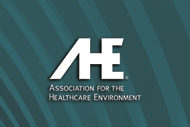
Investment needs must be quantified in financial terms that are meaningful to the CFO.
Image by Getty Images
With the health care field nearing the midway point of the year, many health care facilities are in the midst of creating their capital and operational plans.
Due to the COVID-19 pandemic, many facilities managers are being asked to do more with less. With year-over-year revenues down at most facilities, capital plans are being modified, if not postponed.
Thus, health facilities managers should examine the potential impact to their facilities.
Planning and renewal
There is an increasing discussion at the national level about the aging health care infrastructure and the impact of the physical environment on patient care.
The American Society for Health Care Engineering’s 2017 monograph, “State of U.S. Health Care Facility Infrastructure,” cited the median age of plant for U.S. hospitals in 2015 as ranging from 10.78 to 11.48 years. In 2004, the median age of plant for U.S. hospitals was 9.6 to 9.8 years; and, in 1994, it was 8.4 years.
When this issue is coupled with more stringent compliance requirements and relentless cost pressures, it creates the perfect storm of risk that will continue to challenge all health facilities managers.
But, is this really a new problem? Anyone involved in health care facilities management lives with this reality and risk daily. Everyone knows that continued investment in the facility, over the full life cycle of its buildings, is the key to long-term success, yet the struggle continues.
Why is it so difficult to secure the capital that is required? Often, it is because facilities managers and the C-suite do not speak the same language.
Facilities managers know when things are going wrong and when critical assets need to be replaced. They talk about replacing chillers, cooling towers, air-handling units (AHUs) and boilers, but these concerns often go unheard. The C-suite, more specifically the chief financial officer (CFO), talks about finances and the return on investment (ROI) for taking those actions but does not have the information they need to justify the request.
Creating a meaningful ROI for the proactive replacement of an aging AHU that serves a surgery suite is often difficult when a new magnetic resonance imaging unit, with direct ties to revenue, will win the ROI battle every time.
When the air handler fails, surgeries are canceled, and the AHU must now be replaced in an emergent situation. The ROI of that air handler has now gone to infinity, and the money becomes readily available. Often, the emergent replacement exceeds the original proactive replacement cost projections, compounded by loss of business revenue, increased liability and unplanned work effort.
Best practices
What are some best practices in securing capital and operational funding? Here are some questions facilities managers should ask:
- Is the asset data in the computerized maintenance management system (CMMS) accurate?
- Does the facilities manager have the correct inventory, asset condition, installation date, preventive maintenance (PM), and break and fix history?
- Does the facilities manager have a baseline engineering assessment of the facility? This can be as formal as a facility condition assessment (FCA) by a third party, or an assessment utilizing the subject matter expert on the facilities management team. Either way, standardized units of measurement are necessary.
Once a facilities manager has collected all the asset information, the next step is to risk-rank these assets by space or area served. For instance, an AHU serving the atrium would be of less risk than an AHU serving an operating room, intensive care unit or neonatal intensive care unit.
The facilities manager now has established an accurate asset inventory and a quantifiable condition of these assets. When coupled with a risk assessment of the assets and areas served and an understanding of the related magnitude of impact, the facilities manager will have a prioritized, data-driven starting point for capital investments.
Next, the facilities manager will need to communicate these needs in terms the C-suite understands. They can correlate the equipment’s potential failure to infection control, loss of revenue and patient satisfaction, to name a few areas of correlated impact.
Facilities managers should remember that investment needs must be quantified in financial terms that are meaningful to the CFO. When the budget requirements are known to everyone in real time, both parties together can model and prioritize spending, emergent repairs can be prevented and the physical environment can improve.
Ultimately, the value of “the failure that never happens” is not only measured in dollars and cents, but in risk avoidance, life safety and patient care.
Steps for funding
Both capital and operational funding have been affected by the COVID-19 crisis, but there are steps facilities managers can take in each area to maintain their budgets as well as address possible shortages. They include the following:
Capital funding. Facilities managers seeking to deploy a predictive maintenance strategy to support capital planning can follow these steps:
Step 1: Change management. Facilities managers should make the commitment to a predictive maintenance strategy, understand the cultural and operational challenges, and communicate the intended outcomes with the maintenance staff and the C-suite alike. It is imperative that they tie their organization’s mission, vision and values into a capital plan presentation and discussions. Facilities managers should always be casting vision.
Step 2: Review standards. Facilities managers should conduct a complete review of CMMS data standards and the processes for tracking reactive, preventive and compliance-related tasks. They should correct any deficiencies as necessary before moving on. This will help create an operational baseline.
Step 3: Evaluate asset risk. Facilities managers should complete a risk assessment of all utility assets to properly prioritize both maintenance and investment requirements. They should apply standards equally and universally across the enterprise. Facilities managers must understand and quantify risk tolerance.
Step 4: Validate current performance. Facilities managers should conduct an FCA, validate asset inventory and understand current asset performance. They should collect all data utilizing the enterprise standards and link risk evaluation to actual asset condition. Facilities managers should consolidate the previously mentioned information into an objective condition value for each asset, zone, building and campus.
Step 5: Construct an initial capital plan. Utilizing the data from the previous steps, facilities managers can now begin to develop a data-driven capital plan.
Step 6: Data integrity and maintenance. Facilities managers should continuously update asset condition and risk scores over time, modify asset useful life and model capital planning. They should optimize capital investments based on asset risk and performance.
Step 7: Continuous improvement and risk mitigation. Facilities managers should see the results of investments, quantify those results through improving index scores, optimize ongoing maintenance strategies and avoid emergent repairs. They should follow the data and celebrate success.
Operational funding. COVID-19 has also affected operational budgets, especially with regard to head count. This is where facilities managers need to put their business hats on, dig into their numbers and tell their story.
As health care organizations look for ways to deal with the 2020 loss of revenue from COVID-19, many have decided to take an “equal contribution” approach to the savings. This is often looked at through census, patient discharge and a host of other patient-driven attributes.
While this may appear to be an effective approach to balance the cost and revenue equation, it does not help the organization’s long-term infrastructure goals. Facilities managers tend to measure human capital need by square footage. However, there is no industry consensus on how to measure this, and it is often inaccurate or unknown.
The following process will aid facilities managers in building their defense and provide them with an understanding of their true needs:
Step 1: Understand nondiscretionary spending. Mandatory facility workload can generally be broken down into the following three categories. This information can be calculated from the work order history in the facility’s CMMS system; if that is not available, facilities managers can use industry data as backup.
- Category A: Non-asset-driven workload. This includes “service the facility” labor and expenses that are not unique to individual assets but nonetheless require effort. This may include anything from plunging toilets to hanging diplomas in doctors’ offices. It’s relatively undefined and often unseen, but it is real and consumes a lot of resources. Theoretically, it may be easy to reduce these demands, but that is rarely the case in practice.
- Category B: Asset-driven workload. This includes “operate the facility” and “break/fix” labor and expenses that are directly tied to the infrastructure. For example, boiler operation requires the same labor and expense regardless of hospital census. This often is the case for many other infrastructure requirements. A leaking pump is a leaking pump regardless of census data. When something breaks, it has to be fixed. Facilities managers should consider the following to help identify the asset-driven workload: How many break/fix work orders did the facilities staff complete last year? How many hours did that account for?
- Category C: Compliance-driven workload. This includes “cost of compliance” labor and expenses that are directly tied to maintaining regulatory compliance with accrediting organizations and local authorities having jurisdiction. Examples include mandatory inspection, testing and maintenance requirements including but not limited to exit sign inspections, fire door inspection and generator testing, all of which consume time and money, whether insourced or outsourced with work orders.
Facilities managers should understand that those three categories (A + B + C) equal total nondiscretionary cost. This is the minimum operational baseline for a facility. Any staffing or budget cuts into those three categories are not possible without direct consequences. Facilities managers should track and document everything. If a task takes a resource from the department, parts, equipment, tools, labor or subcontracting, it should be tracked. This is best accomplished through work order management.
Step 2: Understand total cost to PM. How many units of time, expressed in hours and dollars, are required to fully fund and staff a facility’s preventive maintenance program? How many preventive work orders did the facilities team complete last year? Are all PM work orders being tracked?
This will differ from facility to facility based on the quality and accuracy of the mechanical-electrical-plumbing (MEP) infrastructure inventory and the existence or nonexistence of a well-documented and active alternative equipment maintenance program. Hypothetically, this is a facilities manager’s only discretionary cost, because it is the only variable that is fully within their control to execute, if they have resources. Often, it is the first thing that will be cut when other issues arise.
Step 3: Define total operational needs. Total nondiscretionary cost (A + B + C) plus PM cost equals optimum. With the full story in hand, facilities managers now have a total cost summary that can be utilized to engage leadership in an objective manner.
For example, presume that A + B + C equals 25 full-time equivalents (FTEs) and PM equals five FTEs for a given site. The optimum level, therefore, is 30 FTEs. This is data-driven, documented and defensible.
Step 4: Engage the C-suite. Facilities managers should use this data to justify capital, operational needs, new staffing or defend against staff furloughs and reductions. When the CFO says, “We need to reduce staff by 10%,” facilities managers should be prepared to respond.
Using the above example, a 10% reduction in staff would lead to a reduction of three FTEs. In reality, a 10% staff reduction in the case equals a 60% reduction in the ability to perform PM. By default, those three FTEs will come out of the five-FTE PM pool. All other work is nondiscretionary.
Staff reductions, therefore, have measurable consequences. That’s the ROI of preventive maintenance in dollars and cents.
Minimizing risk
Imagine if somebody did not change the oil in their car. They might save a few hundred dollars a year, but they’ll pay the price down the road with an engine rebuild or replacement in just a few years.
Now, imagine an entire fleet of cars or, better yet, a total MEP infrastructure portfolio that is made up of hundreds or thousands of assets. Imagine that the expected useful life of each asset in that portfolio can be extended or cut short, by conservative estimations, by 20% based on PM or lack thereof. For instance, a 20-year AHU might last only 16 years or, worse, simply fail. It is the same story for chillers, cooling towers, boilers and other expensive pieces of equipment.
Tens of thousands of dollars of operational spending (measured in FTEs and service contracts) can impact millions of dollars on the capital side. Asset-by-asset and site-by-site, investing in preventive maintenance can generate an ROI of up to 300% by extending equipment life. Divesting can generate the same ROI, only in a negative manner. Plus or minus 300% ROI, in a time of financial crisis, is a message that any CFO will understand.
During difficult financial times, CFOs are seeking to minimize financial risk to the health care organization, while providing ROI. Differing maintenance activities (preventive, predictive or corrective) as well as reducing maintenance staff increases the risk to infrastructure and equipment as they continue to age. Thus, future capital needs will increase significantly. This is another type of ROI: risk of inaction.
Data on deferred investments shows added risks and expenses
COVID-19 has caused the health care field to undergo some of the same introspective review and changes most companies have had to endure throughout the country’s economic history.
This correction has many causes, but most would agree this is due in no small part to a decreased revenue of higher margin services. Facilities managers are being asked for only emergent capital requests and simultaneously being asked to “contribute” to reductions in force, but what is the long-term impact?
Data from Facility Health Inc. (FHI), Grand Rapids, Mich., derived from hundreds of hospitals and health care organizations, shows on average 41% of infrastructure assets are in a deferred status, meaning past their useful life. This does not mean they will fail tomorrow, but it does mean that the risk of failure increases every day.
This same data also shows on average that an investment of $3.50 per square foot is needed to maintain that level of deferment. To decrease that level of deferment to a more manageable level (e.g., 25-30%), a capital investment of $5.50 to $6.50 per square foot may be required. The higher the baseline deferment, the higher the capital investment to decrease the organization’s overall asset deferred status.
Additionally, FHI data also shows for every $10 spent or cut in a 10-year period on the operational side, a health care facility will experience a resulting impact of plus or minus $40 in capital expenses during the same period. Therefore, a $1 million annual reduction in operational spending over a 10-year period will produce a $40 million capital need for the same period.
Thus, reducing human capital resources (operational spending) will have an adverse and costly impact on future capital need.
Scott Mason, CHOP, FRSPH, HCC, is a director at Facility Health Inc., Grand Rapids, Mich. He can be contacted via email at s.mason@facilityhealthinc.com.





